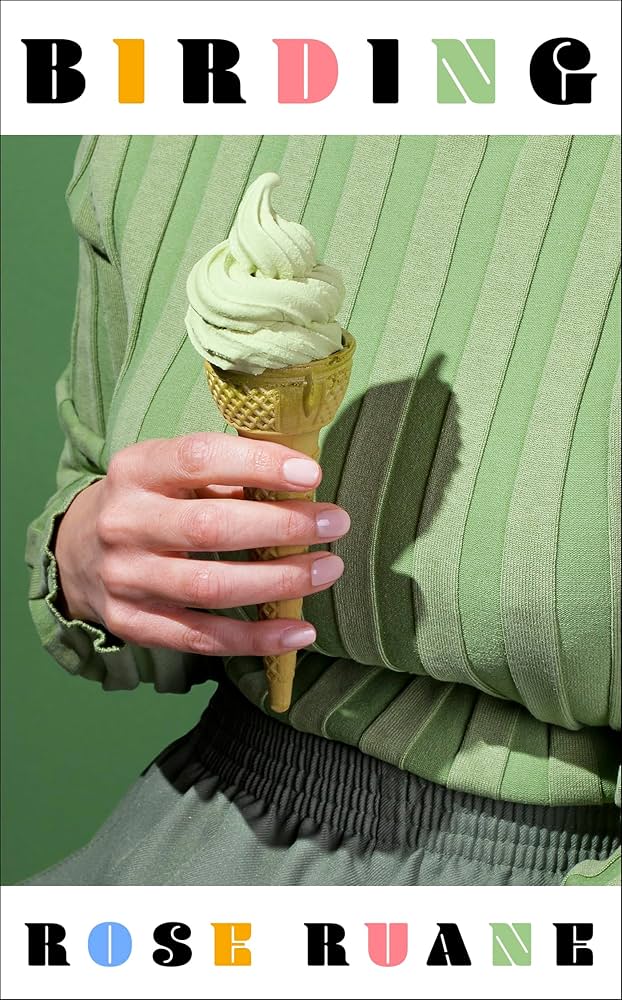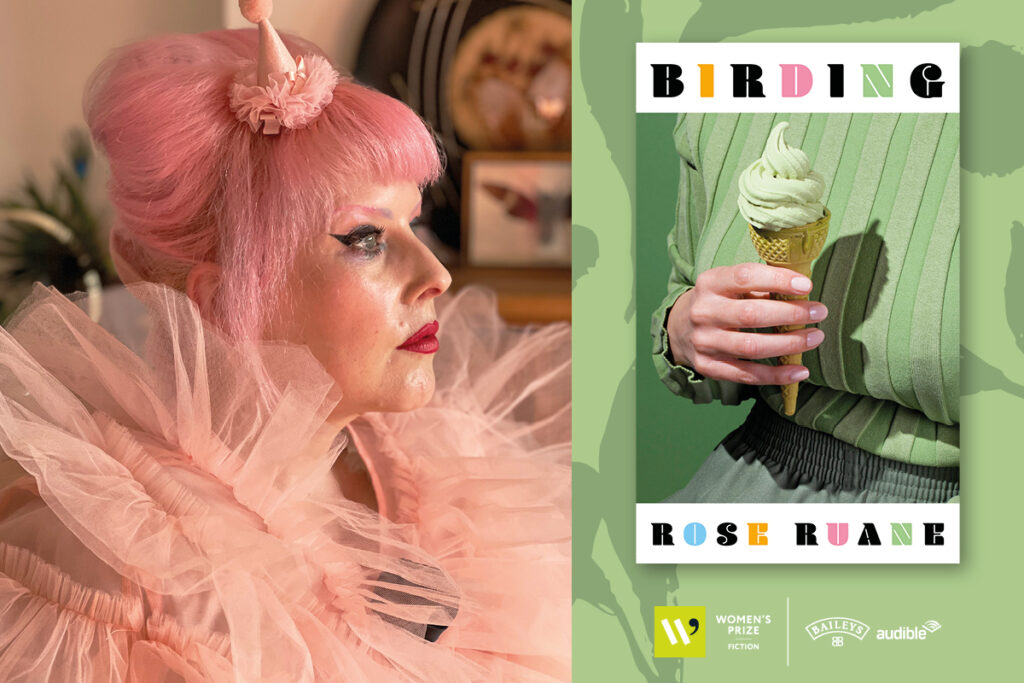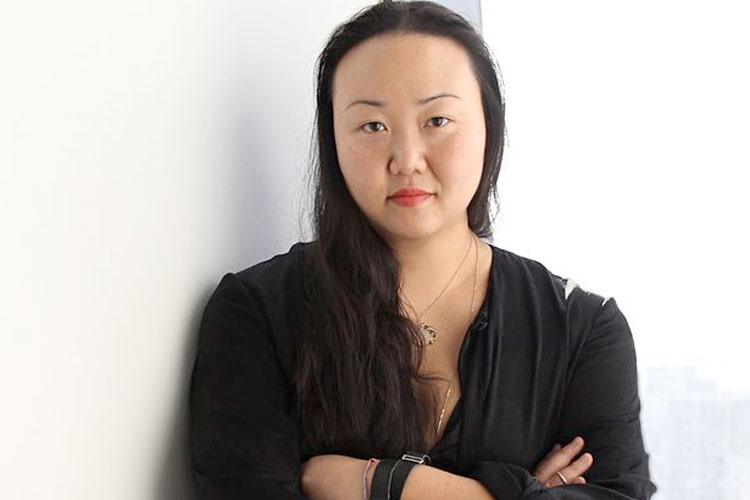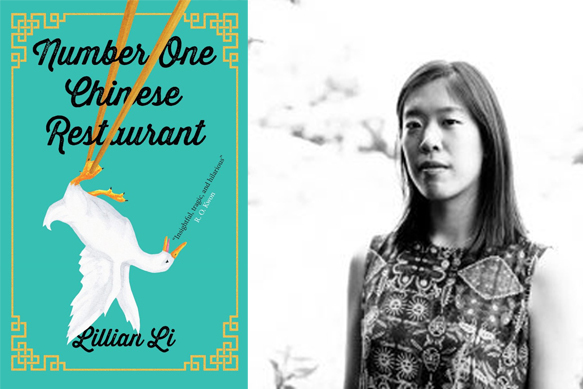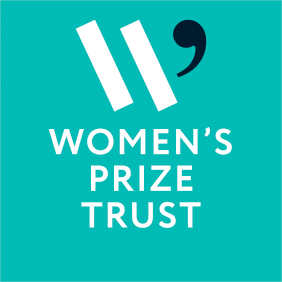Rose Ruane’s Birding is the story of two women untangling damaging details of their past in a seaside town, in hope of a better future.
Longlisted for the 2025 Women’s Prize for Fiction, judge Bryony Gordon says: ‘I highlighted the whole book as I was reading! It’s the story of two very different women who live in a seaside town in Britain – it speaks to the reality of being a woman not only today, but also coming of age in the nineties and noughties.’
To find out more about the book we spoke to Rose about her inspirations, writing process and favourite books.
How would you describe your book to a new reader?
A sad, funny, poetic story about middle aged women being forced into confrontation with the forces that have shaped them, as their lives begin to collide, which asks if we ever truly know ourselves and if real change is possible, set against the backdrop of the #MeToo movement, which takes place in a run down, gentrifying seaside town during in winter.
What was the idea that sparked your novel?
This book wasn’t really sparked by an idea, it was more like dominos falling into one another in a way that the narrative mimics. The two main protagonists Lydia and Joyce each insisted on being written about, but with their lives so apparently disparate and discrete from one another, for a long time, it never occurred to me that one might have anything to do with the other. Then, in an attempt to work out which of them to write about, I placed them side by side in my mind, and realised both were equally haunted by absent men who’d shaped their lives and selves, both were unwillingly grappling with questions about those men’s responsibilities and their own, while living with other seemingly strong women and immediately that exploration of their samenesses and differences became the beating heart of the story, as their lives slowly embarked on a collision course.
Which part of the book did you write first? Was there a moment that clicked a lot of things in place or where you felt the strands of the book started to come together?
Betty and Joyce, the mother and daughter protagonists, with their strangling symbiotic relationship, quirks and collections were characters in a play I wrote back in 2014 and I always felt I’d got their voices and relationship right but not their story, and throughout the years, they nagged at me to try again, to do them justice this time. Whereas, Lydia, the one hit wonder grappling with the far reaching implications of a self serving, #MeToo motivated apology from a famous ex-lover, was forged in the white heat of my rage at an analogous experience of mine. I was vacillating between an almost visceral need to tell her story and the impulses to avoid everything involved in that and pinballing between Joyce’s story and Lydia’s and feeling utterly exasperated at my own indecision, when the act of comparing the relative merits of writing about them made them instantly inseparable and immediately became the story. Almost immediately I knew what to write, how drawing the two of them together would let me explore all these other things I was thinking about around public and private selves and social media, how we become ourselves and whether or not it’s ever too late to change.
Which part of the book was the most fun to write? Which was the most challenging?
I had such a clear sense of the seaside setting in winter and I loved creating that backdrop. Joyce’s overbearing mother Betty, with her with her casual commonplace monstrousness was a strange joy to write, although equally, I found it very satisfying to complicate her and reveal how she had become that person. The elements of abuse at the hands of men were difficult to write, as I had a profound sense of responsibility to both my own experiences and those of potential readers and I wanted to capture the complexities in ways that felt true and sensitive and subtle but also unflinching and honest. And in a way, the greatest difficulty was that I was about halfway through writing Birding when the pandemic happened, and all of a sudden, this work of contemporary fiction was set in a world that perhaps did not exist anymore and which might never be recognisable again. But the book slowly came back to life as we reemerged from lockdown and ultimately, there were things about the claustrophobia and uncertainty of that period that deepened and complicated my understanding of the characters’s lives and living situations and, I hope, made the writing more empathetic as a result.
What is the best piece of writing advice you have ever received?
Sad to say I can’t remember who said it, but twenty years ago, when I was at art school, someone told me you can’t scold creative work into being and you can’t boss ideas about and I think it’s one of the most helpful things I’ve learned even though it probably took me the best part of every one of those twenty years to finally stop trying and actually put it into practice.
Which female author would you say has impacted your work the most?
Probably Edna O’Brien for depicting women’s lives, emotions and experiences with the full and intricate spectrum from beauty to brutality and being such a wonderful writer of all the complex simultaneous truths of human hearts and relationships.
Could you reveal a secret about your creative process?
I’ve really learned that the secret to writing for me is being really present and honest with myself about how I am on any given day: accepting that I’m rarely quite the same self two days in a row, depending on things like mental and physical health and what other demands I have on my time, and being really realistic about how those factors impact on my ability to write. I’ve developed a bit of mantra; “I want to do the most I can with the best I feel” which makes room for all that inconsistency and flux and makes me much more accepting of the fact that some days I can write a few thousand words and others I can barely squeeze out a sentence.
